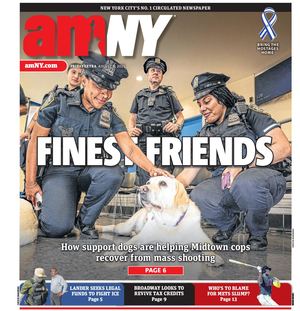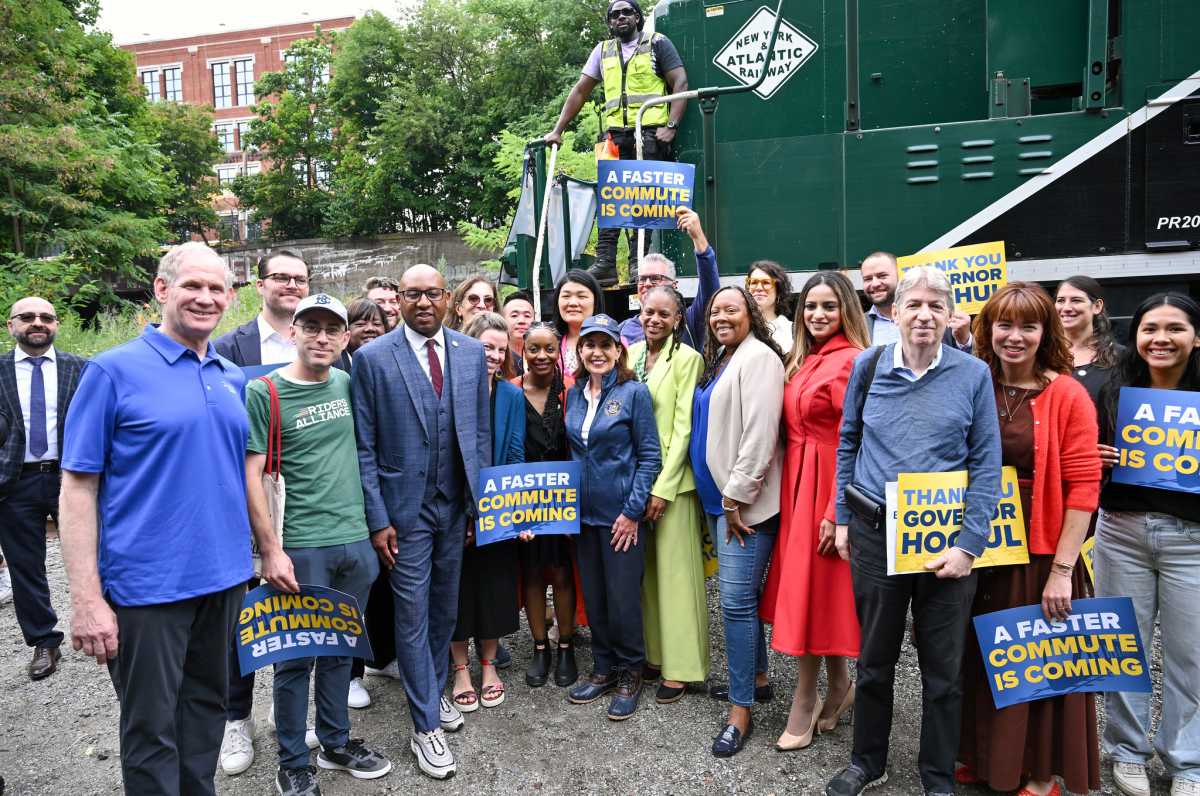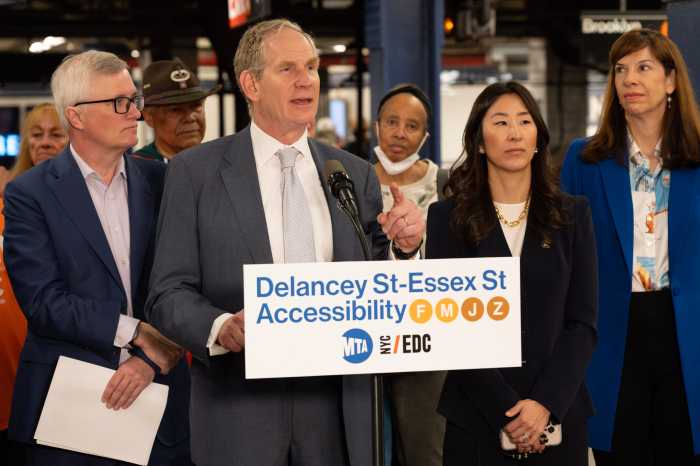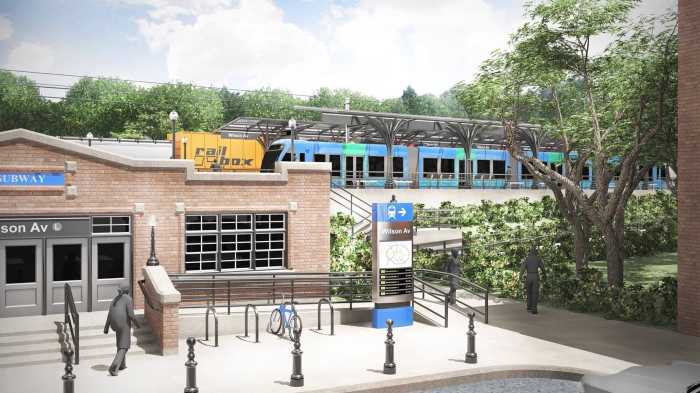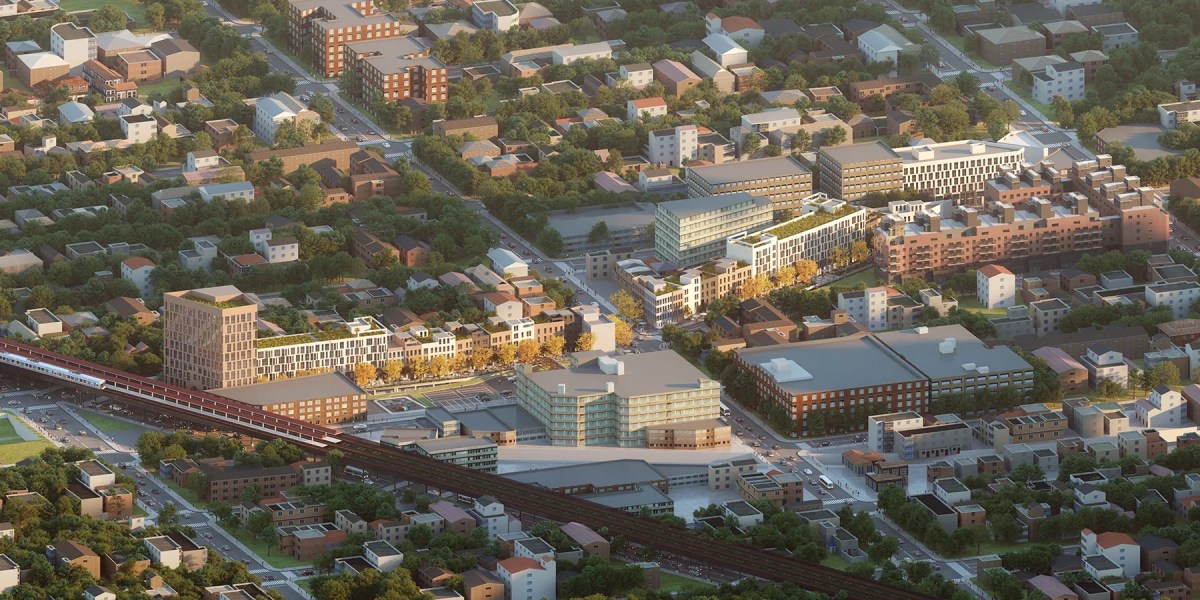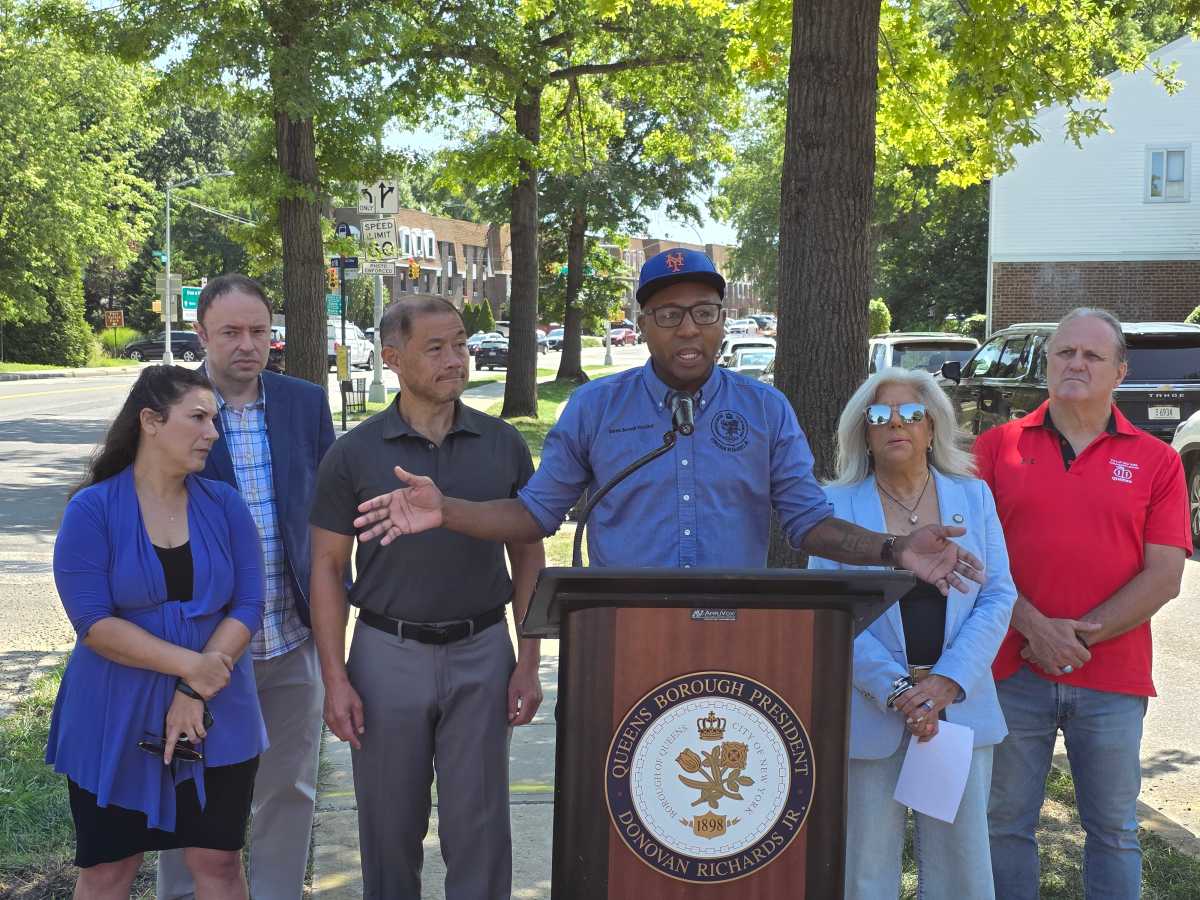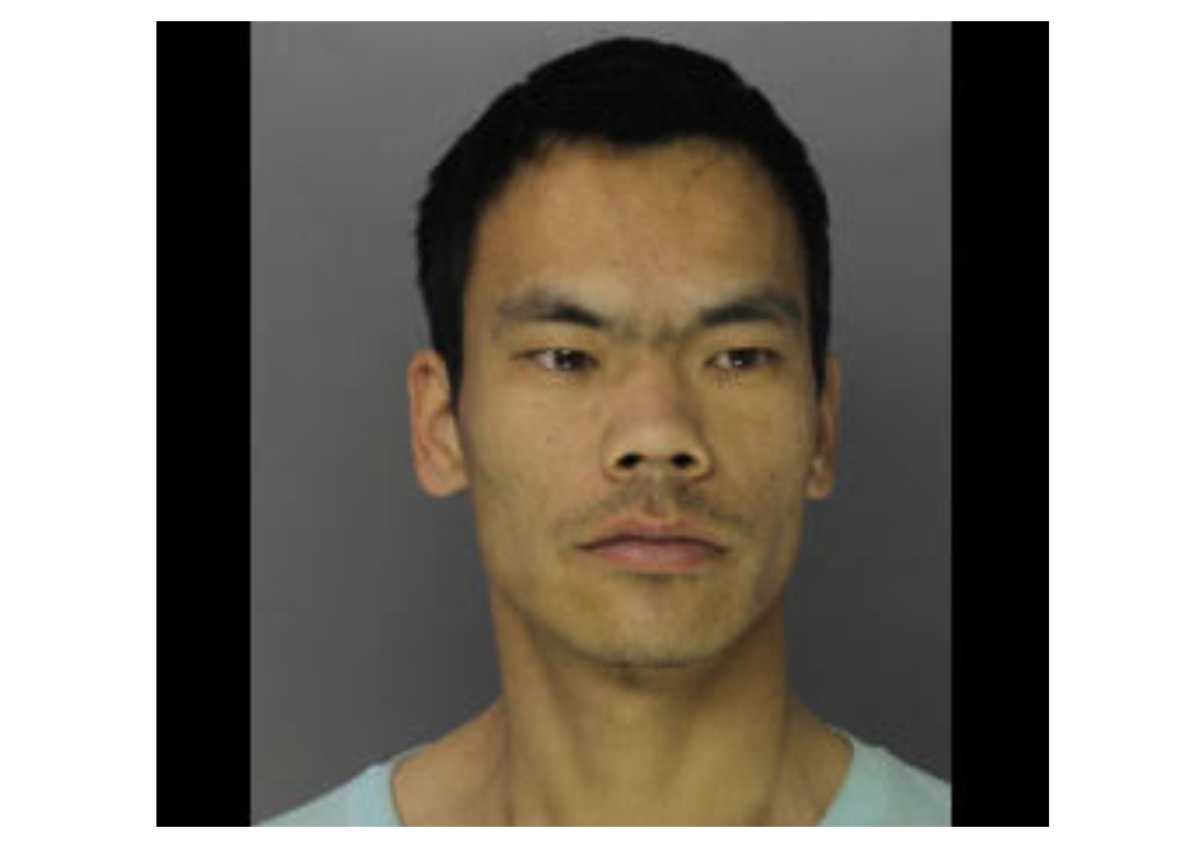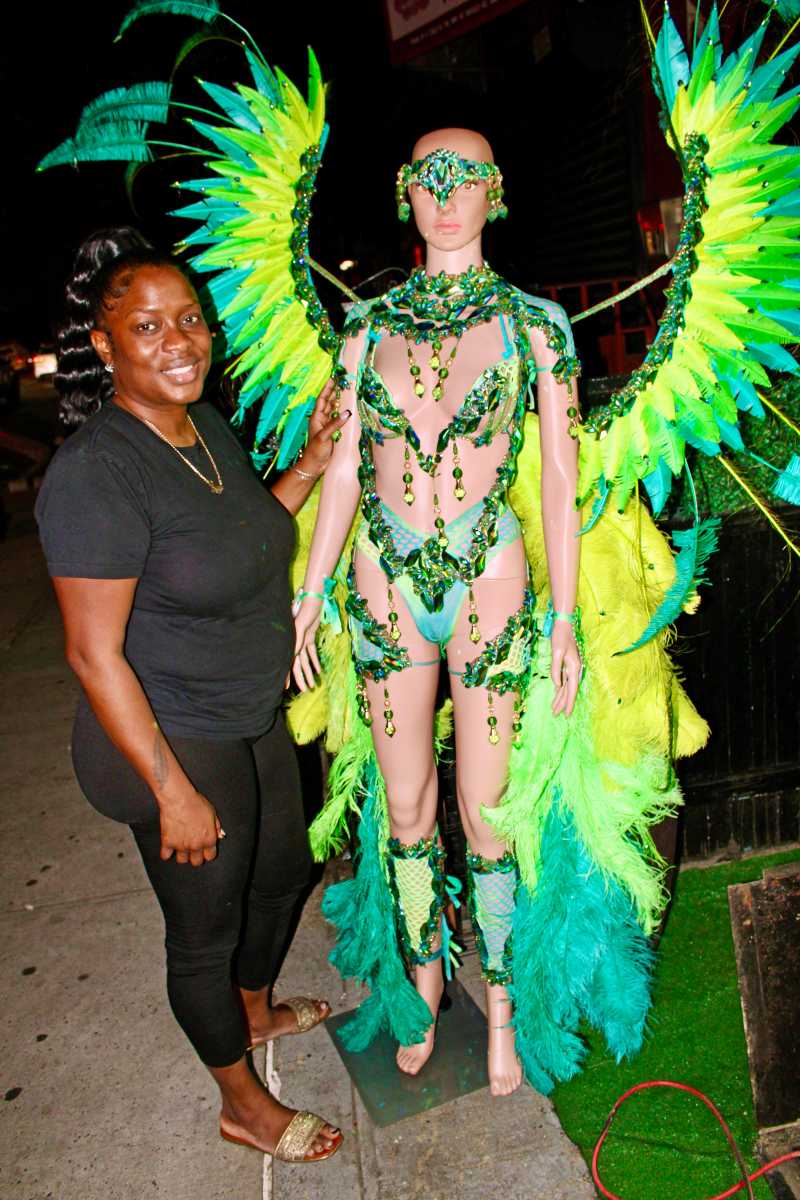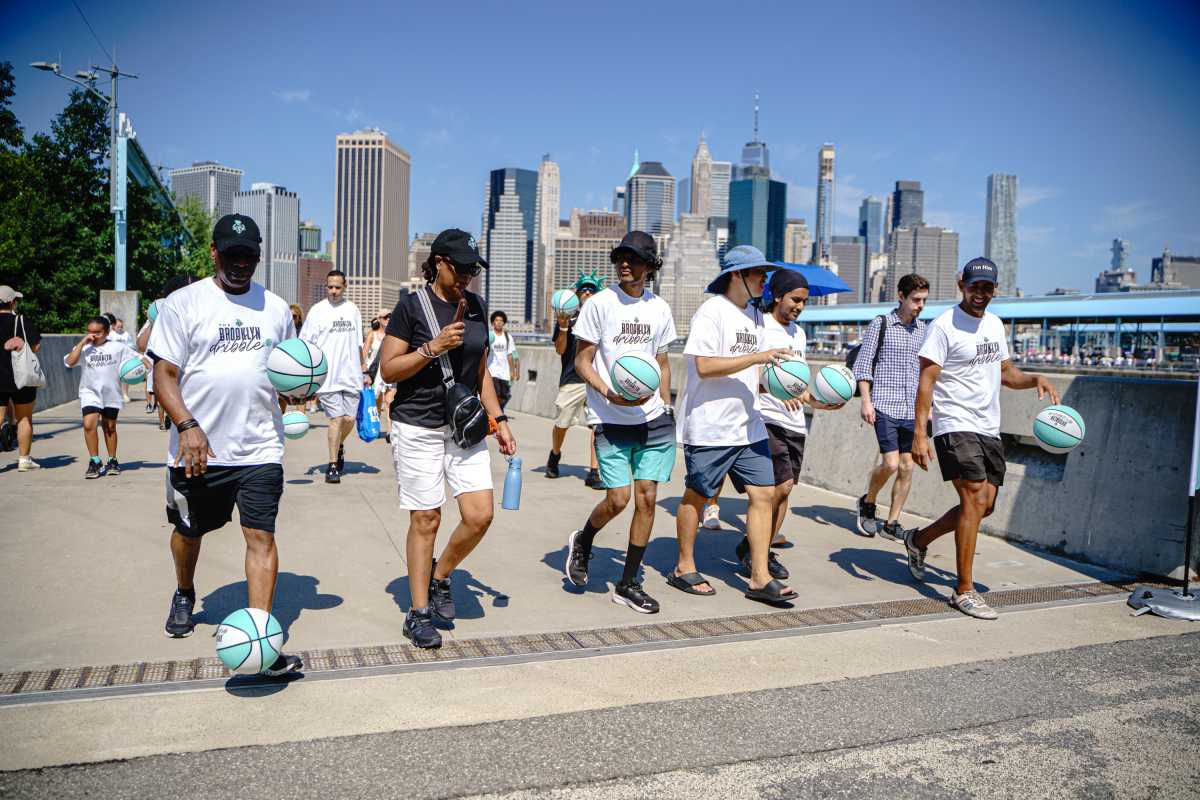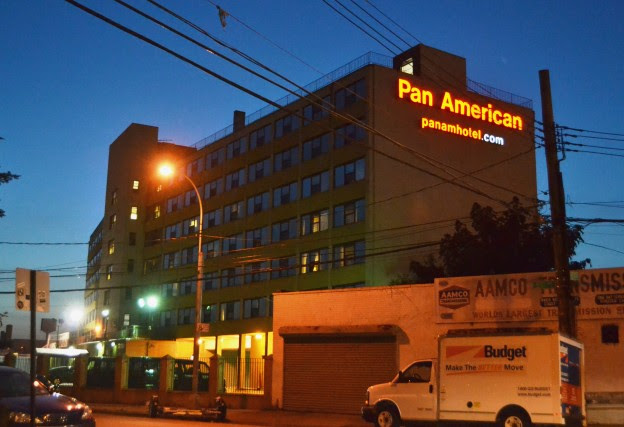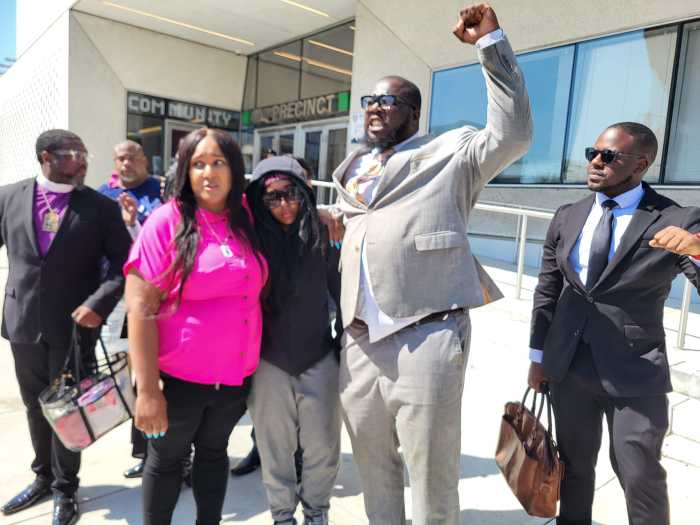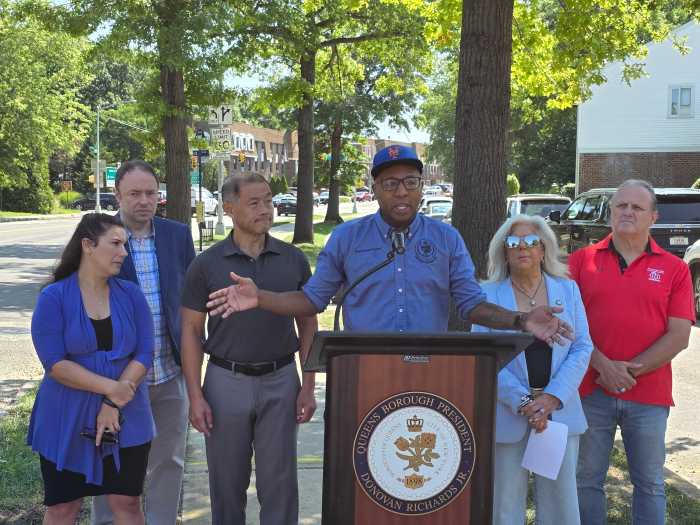Governor Kathy Hochul came to Brooklyn Friday morning for a victory lap after the MTA board’s design contract approval for the Brooklyn-Queens Interborough Express, or IBX.
Hochul, speaking to press next to train tracks in downtown Brooklyn, kicked off the train’s project design phase with MTA Chair and CEO Janno Lieber, Queens Borough President Donovan Richards, and New York State Operations Director Kathryn Garcia.
“I’m so proud of this because it’s all about lifting up people’s quality of life, that is what I’m dedicated to, keeping people safe, making them have a phenomenal life in the City of New York,” Hochul, who has championed the project since she took office in 2021, said. “This is one step forward.”
The board approved the contract — totaling nearly $166 million with Jacobs and HDR — and full design on Wednesday, bringing the long-awaited $5.5 billion project closer to fruition. The IBX will connect 17 subway lines, 50 bus routes, and the Long Island Railroad. The new train line will run 32 minutes end-to-end and will be the first rapid transit line built in New York City since the construction of the G train in 1937.
“It’ll open up a whole new world of opportunity without adding traffic on our clogged roads,” Hochul said.

The state expects the IBX and its anticipated 19 stops to serve 160,000 riders each day, providing for the first time a direct, high-speed train connection between New York City’s most populated boroughs. The IBX’s projected annual ridership is set to be higher than the ridership of any other light rail in the United Stated at 48 million riders — the next largest is Los Angeles’ light rail system at 46 million riders per year.
The project, which could be completed by early next decade, will turn existing freight train tracks and other infrastructure into the rail line for the IBX. At Friday’s press conference, Hochul acknowledged that the project’s construction will inevitably disrupt its surrounding neighborhoods.
“This is critically important. This is a big change, it’s gonna be disruptive, we get that,” Hochul said. “This is why you bring in the community this early in the process. You’ve had open houses, hosted pop ups, met with residents and business owners, because you have to build trust and communication to make sure this is ultimately successful with community buy-in.”
The IBX will start at Roosevelt Avenue in Queens and run to the Brooklyn Army Terminal in Bay Ridge, Brooklyn. The route will include Jackson Heights, Maspeth, Ridgewood, Midwood, East Flatbush, East New York, Brownsville, and others.

Lieber thanked Hochul for her work on the project and her dedication to building new transportation in New York City.
“You are perhaps the most impactful governor on transit since Nelson Rockefeller left office more than 50 years ago, and New Yorkers are going to see the legacy of the Hochul era in mass transit for generations to come,” Lieber said. “You are the abundance governor that’s putting us back in the building new transit business.”
Richards spoke about his partnership with Brooklyn Borough President Antonio Reynoso and thanked Reynoso for “stamping all of our passports here in Brooklyn this morning.” Richards thanked Hochul for her dedication to the project and for “putting her money where her mouth is.”
“Not only do we want the IBX, we need the IBX,” Richards said. “Most of the time when we talk about transit deserts in Queens, we talk about the Rockaways, or Rosedale, or Bayside, but there are other neighborhoods that are transit deserts as well, we talk about Middle Village, Glendale, and Ridgewood.”
Richards said the IBX “is a direct investment in making both Queens and Brooklyn boroughs where you can live, work, and play without having to leave.”
“Cutting commute times is also an investment in ensuring our families have more time together at home, and as a working dad from a transit desert myself, I cannot put into words how much and how meaningful it is just to have an extra hour with our families,” Richards said.
